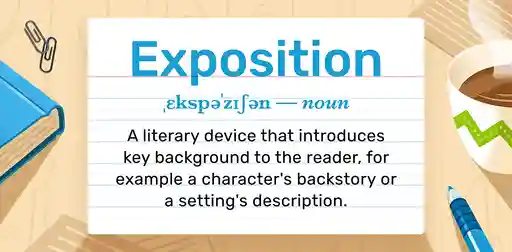Last updated on Aug 22, 2022
What Is Purple Prose? Writing 101: Definition, Tips, and Examples
About the author
Reedsy's editorial team is a diverse group of industry experts devoted to helping authors write and publish beautiful books.
More about the Reedsy Editorial Team →Martin Cavannagh
Head of Content at Reedsy, Martin has spent over eight years helping writers turn their ambitions into reality. As a voice in the indie publishing space, he has written for a number of outlets and spoken at conferences, including the 2024 Writers Summit at the London Book Fair.
View profile →Purple prose is a style of writing characterized by overly flowery language that tends to draw attention to itself, and away from the story being told. Its typical features include excessive adjectives, exaggerated comparisons, multisyllabic words, long sentences, and elaborate descriptions of a character’s inner thoughts and feelings.
For writers attempting to use poetic language, purple patches are a common problem as they slow a book’s progression, muddle the plot, and create an unintended melodramatic tone that reduces the work’s power.
Here’s an example of purple prose:
The mahogany-haired adolescent girl glanced fleetingly at her rugged paramour, a crystalline sparkle in her eyes as she gazed, enraptured, upon his countenance. It was filled with an expression as enigmatic as receding shadows in the night. She pondered whether it would behoove her to request that she continue to follow him on his noble mission…
Yikes, right?
Purple prose doesn't always persist throughout the entirety of a piece — it can also pop up every so often in “purple patches” — but even a few "purple passages" can be disruptive.
Think of purple prose as a cardboard cutout of a celebrity. From a distance it looks convincing, even impressive — but as you draw closer, you realize there’s nothing behind it. Purple prose is like that: beautiful from afar, with very little substance to it.
What purple prose is not
To clarify, the term “purple prose” doesn’t just automatically apply to any kind of dense or elaborate language. This is a common misconception, perpetuated by diehard fans of minimalism and Ernest Hemingway. Purple prose specifically refers to overblown description that fails to add to the text, or may even detract from it.
So for example, the language Virginia Woolf uses in her books is flowery, but that doesn't mean it's purple. Her consistently elaborate prose doesn’t detract from the story. Rather, it contributes to her signature stream-of-consciousness narrative style:
One feels even in the midst of the traffic, or waking at night, Clarissa was positive, a particular hush, or solemnity; an indescribable pause; a suspense (but that might be her heart, affected, they said, by influenza) before Big Ben strikes. There! Out it boomed.
Likewise, David Foster Wallace’s writing may be difficult to decipher due to its density, but it’s certainly not devoid of meaning:
What passes for hip cynical transcendence of sentiment is really some kind of fear of being really human, since to be really human [...] is probably to be unavoidably sentimental and naïve and goo-prone and generally pathetic.
“Purple prose” is often used as an insult for highly lyrical or complex language that some readers dislike. But don’t be fooled — actual purple prose lacks the elegance and cohesion of these examples, and distracts from the text rather than enhancing it.

Free course: How to self-edit like a pro
Rid your manuscript of the most common writing mistakes with this 10-day online course. Get started now.
Examples of purple prose
In this section, we’ll look at various samples of purple prose in published work and try to revise them. You’ll notice that all of these passages have slightly different problems, which can be addressed via distinct methods to help them read in a smoother and more satisfying manner.
Eldest (Book 2 in The Inheritance Cycle)
Though Christopher Paolini’s dragon-centered fantasy series was a big hit with the YA crowd, it’s also the victim of some serious purple patches. This is especially true for Paolini’s second book, Eldest, which follows the characters established in his first book Eragon.
The following passage is taken from chapter 2, The Council of Elders:
Saphira’s muscled sides expanded and contracted as the great bellows of her lungs forced air through her scaled nostrils. Eragon thought of the raging inferno that she could now summon at will and send roaring out of her maw. It was an awesome sight when flames hot enough to melt metal rushed past her tongue and ivory teeth without harming them.
Problem: Excessively ornate description
Solution: Reduce adjectives, verbs, and sentence length
Revised passage: Saphira breathed heavily, her nostrils expelling warm air. Eragon sat and marveled at her power. It was amazing that Saphira's fiery breath could melt metal, yet she was immune to its harm.

Bob Honey Who Just Do Stuff
Sean Penn’s 2018 debut novel left critics flummoxed, and not just because of its unusual plot — it’s also chock full of purple descriptions that had readers scratching their heads. Though Bob Honey is supposed to be satirical, that doesn’t explain or justify the nearly inscrutable language Penn employs.
From chapter (or “station” as Penn labels it) 13:
There is pride to be had where the prejudicial is practiced with precision in the trenchant triage of tactile terminations. This came to him via the crucible-forged fact that all humans are themselves animal, and that rifle-ready human hunters of alternately-species prey should best beware the raging ricochet that soon will come their way.
Problem: Very difficult to decipher
Solution: Use simpler words and clarify references
Revised passage: Bob Honey suddenly realized that humans are animals too. We should all be thoughtful and deliberate in the act of hunting, he understood — for we can easily become the hunted ourselves.
My Immortal
My Immortal: the infamously terrible piece of fanfiction that changed the Internet forever. Besides its myriad of structural and plot-based issues, My Immortal also suffers from purple prose. Here is a particularly cringeworthy passage from Chapter 8:
My friend B'loody Mary Smith smiled at me understatedly. She flipped her long waste-length gothic black hair and opened her crimson eyes like blood that she was wearing contact lenses on. She had pale white skin that she was wearing white makeup on. Hermione was kidnapped when she was born. Her real parents are vampires and one of them is a witch but Voldemort killed her mother and her father committed suicide because he was depressed about it.
Problems: Unnecessary aesthetic details, run-on sentences, confuses reader and muddles plot
Solution: Delete passage and restructure entire piece. Some prose is so bad that it’s not worth trying to fix — fortunately, My Immortal is such an outlier that almost nobody need resort to such extreme tactics.
The purple prose of My Immortal is still remembered as legendarily awful #memorylane
Click to tweet!
4 tips for avoiding purple prose
Since purple prose is a hallmark of poor writing, you want to avoid it at all costs. Unfortunately, it’s all too easy to fall into the “purple trap,” especially as a novice writer trying to develop a sophisticated style. For those concerned, this section will give you some ground rules to help you avoid that flowery demon of writing.
1. Write in your own voice — not someone else’s
This is the most essential tip to remember if you’re worried about purple prose. Because purple patches result from trying to sound more “literary,” they often crop up when you’re attempting to imitate a more advanced writing style.
While it’s great to have writing role models, no one likes a copycat — especially when your impression consists of long, ostentatious descriptions. So if you find yourself writing purple prose because you’re trying to sound like someone else, stop and reevaluate. You’re likely mimicking another writer’s voice because you’re struggling to find your own.
Luckily, there are a few things you can do to get a better handle on your voice:
- Look back at old work to see how you used to write. Even if you’ve evolved way past that style, it’s a good reference point for the foundation of your current voice.
- Try freewriting or journaling to achieve a similarly unaffected style.
- If you’re really at a loss, you can simply ask other people how they would describe your quintessential voice, and use that as a jumping-off point.
It can also be helpful to stay away from especially strong literature during your drafting process. Other authors’ styles can seep into your writing, even subconsciously, making it sound purple and ring false. So as inspiring as Fitzgerald and Nabokov might be, it’s best to take a step back from them when you’re working on your own voice.

2. Focus on substance
You can’t go wrong putting most of your energy toward the plot of your story (or the main “thrust,” depending on what kind of piece you’re writing). As long as you stay focused on substance, the purple prose issue should take care of itself.
Of course, that’s easier said than done, so make an effort to stay aware of your plot progression as you write. Create an outline before you begin and allot a rough number of pages for each specific point. If you start to exceed those page limits, you’ll realize you’re probably writing too purple; this will prompt you to consciously refocus on substance.
Alternately, if you have the opposite problem — you need to flesh out more chapters, or reach a higher word count — don’t turn to purple prose. Turn to substance! Include an interesting detail that you may have left out of your initial outline, introduce a new character, or pull a twist out of thin air. Basically, when in doubt, always favor action over description.
3. Use your thesaurus sparingly
A thesaurus is a double-edged sword when it comes to the quality of your prose. It can be great for fixing repetition and occasionally finding substitutes for words, but it can also result in purple passages that sound like Joey’s adoption letter.

With that in mind, if you’re pulling out the thesaurus (or the online thesaurus tool) to use on every other word, you’re probably over-synonymizing. A thesaurus provides plenty of linguistic alternatives, but they’re usually not the most appropriate or organic words for your piece. This produces none other than the dreaded purple prose.
A classic example of thesaurus misuse is when writers try to sub in different words for “said”: uttered, pronounced, vocalized, articulated. The idea is to use variety to keep things interesting, which is generally a good goal for your writing. However, in context, these dialogue tags often sound ridiculously purple. They draw attention to themselves and distract from the actual dialogue, which is not what effective prose should do.
When it comes to word choice, use a thesaurus sparingly, and try to embrace the “simpler” words in your text. Just because you can replace them with something fancier, doesn’t mean you should.

FREE COURSE
How to Write Believable Dialogue
Master the art of dialogue in 10 five-minute lessons.
4. Put yourself in readers’ shoes
Not every passage has to move the story forward, but it should engage the reader in one way or another: through a description that reveals something about a character, poses a question to be answered later, or simply contains relevant, enticing details.
So when patrolling for purple prose, think actively about whether a first-time reader would be intrigued by a potentially purple passage. When evaluating a description, ask yourself: if I were reading this with fresh eyes, would I find it enjoyable, or frustrating? If it sounds obscure, does that serve a purpose, or is it just obscurity for obscurity’s sake?
If you have trouble putting yourself in your readers’ shoes, get some beta readers! This is particularly helpful when you’re writing a piece and you suspect your prose may be verging on lavender, but you’re too close to be objective. Send what you’ve written so far to friends or fellow writers. They’ll tell you which descriptions are strong and what can (and should) be cut.

Final thoughts on purple prose
Always remember that not all elaborate writing equates to purple prose! Don’t let this article discourage you from developing a more complex style — just keep in mind the difference between “complex” and “excessive.”
As long as you write in your own voice, focus on substance, and avoid phrasing that sounds unnaturally ornate, your prose will easily steer clear of purple and head straight for the gold.









